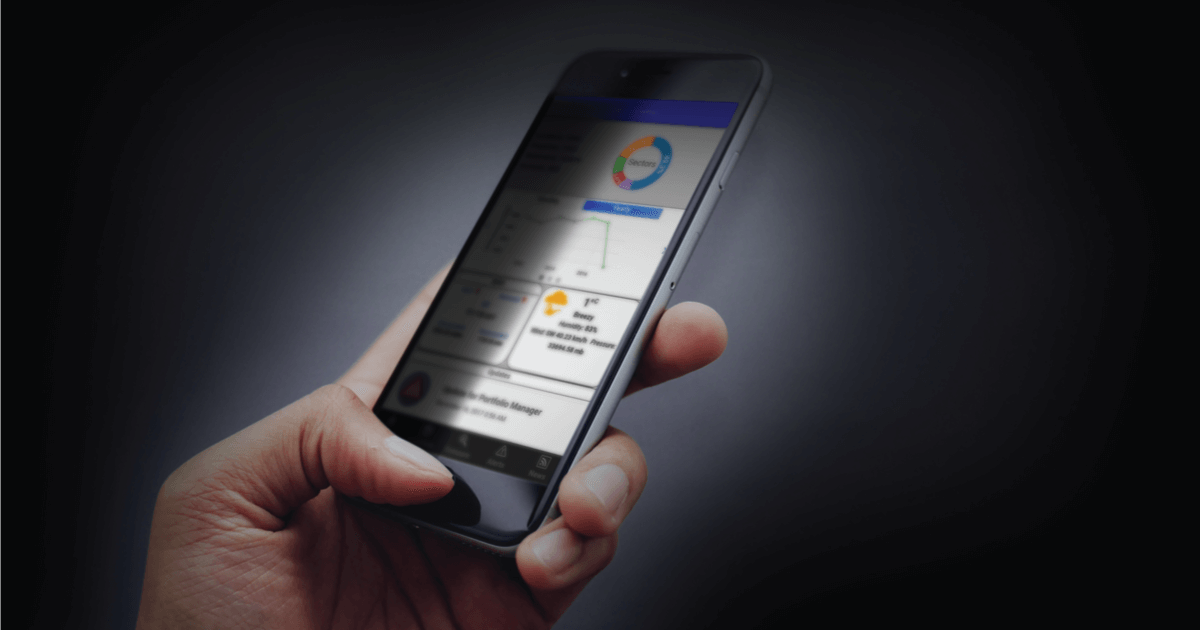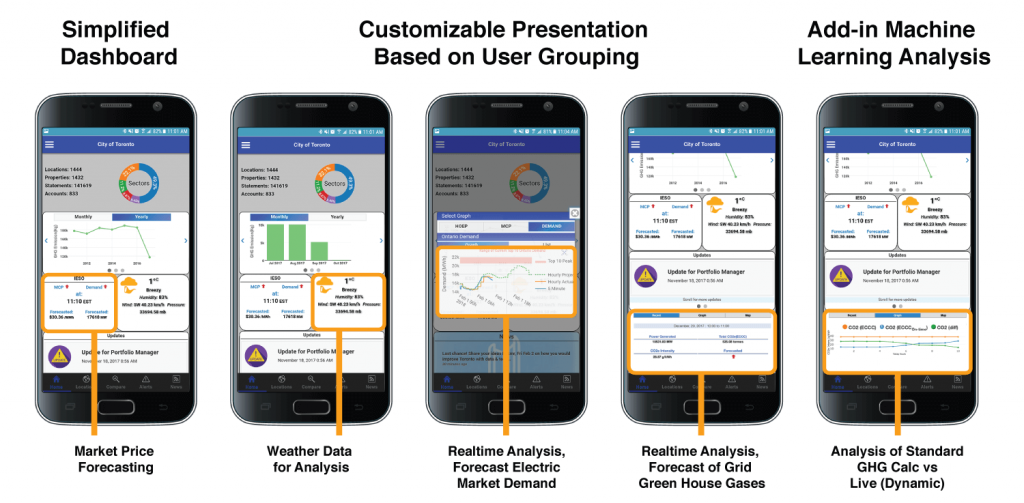SOSCIP Researchers to Build First Cloud/Mobile App for Reducing Emissions
Researcher: Cherie Ding, Ryerson University & Ace Sahebalam, Screaming Power
Supported By: IBM Canada Ltd. SOSCIP, Ontario Centres of Excellence, Screaming Power
SOSCIP researchers are building the first customer-centric cloud/mobile technology that will empower building managers to reduce emissions.

Prof. Cherie Ding at Ryerson’s Department of Computer Science is working with an Ontario-based, energy-focused mobile applications company, Screaming Power, to build the first multi-functional energy utility app/cloud solution. The app, which merges datasets retrieved from multiple systems and departments, will empower building owners and managers (private and public). With a solution pilot at the City of Toronto, the parties have proven the ability to work more closely with energy utilities to help improve energy usage and reduce dangerous GHG emissions.
Industrial and commercial buildings contribute significantly to GHG in Canada. Reducing GHG emissions through aggressive targets is part of Ontario’s Five Year Climate Change Action Plan (2016-2020).
“There are two parts to the project,” explained Prof. Ding. “The first part involves accessing SOSCIP’s Cloud and GPU platforms to process the building and weather data, and the second part is integrating the data into a mobile app which enables users to access the data from their mobile device. It empowers users to make critical decisions on how they’re going to improve the energy usage in their buildings.”
“Ultimately the goal is looking for a way to better calculate and predict GHG while helping building managers reduce their operational expenditures somewhere between five to 20%,” said Gary Michor, CEO of Screaming Power.
One of the barriers to that research is determining a reliable baseline, according to Mr. Michor: “If the weather is different from hour to hour and year to year, how do you really know you’ve met your target for GHG reductions? If the winter season was warmer than normal, it may be difficult to determine without a proper baseline.”

To do this, the team have processed public and private datasets, such as meter readings, energy usage and building parameters, from more than 22,500 buildings and more than 600,000 utility bills, as well as data from all 8,700 Canadian weather stations (as far back as 1958), IESO, Portfolio Manager, NASA and Screaming Power’s Cloud, which has two terabytes of data. The purpose of the big data collection is to build a reliable baseline for weather normalization, analysis, decision making, strategic management and prediction/forecasting.
Key to the project’s innovation is Dr. Ace Sahebalam – current SOSCIP post-doctoral fellow and the senior research leader with Screaming Power. Through the SOSCIP project, Dr. Sahebalam has developed unique skills working with large data.
By accessing SOSCIP’s GPU platform for deep learning, Dr. Sahebalam and the team have built an advanced weather normalization algorithm by using machine learning and artificial intelligence to help improve the accuracy of GHG calculations and building comparison in energy usage with the data they’ve collected.
The result includes an innovative mobile app with forecast predictions and comparable data, available right your fingertips. The app is so successful, the team has a patent pending on the weather normalization and forecasting method using machine learning for IP protection.
Dr. Sahebalam is particularly proud of how far the project has evolved. “The application is a kind of smart city for keeping the environment more green and clean. The application uses a global algorithm that can be used in multiple environments and climates. It’s novel because it brings together data from all the building, environment, energy usage and market footprint into one source and connects users to seven clouds at the same time.”
For Prof. Ding, the ability to collaborate with industry on real data science problems offers a rare and critical opportunity to solve problems important to Canadians and others throughout the world.
“The future of data science is actually getting to work on real-life scenarios and seeking solutions for real challenges as they arise,” explained Prof. Ding. “In a test environment, you’re working with clean data, but real life is filled with noise – missing and incomplete information. This noise can be resolved through investigation and analysis of the past to help with answers now and into the future.”
For Dr. Sahebalam, it’s an exciting opportunity to discover technologies that could transform how we think and act. “This is not the time to change or improve anything that already exists,” said Dr. Sahebalam. “It’s time to jump in and make something entirely brand new. We’re not looking at the way people did things before, we’re looking at the way it should be.”
About Screaming Power Inc.
Screaming Power is revolutionizing customer engagement by providing a mobile platform that connects the energy user, allowing for effective and secure two-way communications to educate, change behaviour and encourage sustainability. Our extensible Intellectual Property provides a low-cost, digital infrastructure for a self-sustaining Eco-System. Our Scream Utility & Scream Enterprise mobile solutions focus on reducing ‘cost-to-service’ for utilities while driving satisfaction and facilitating the delivery of innovation (e.g., connectivity to the IoTs).
